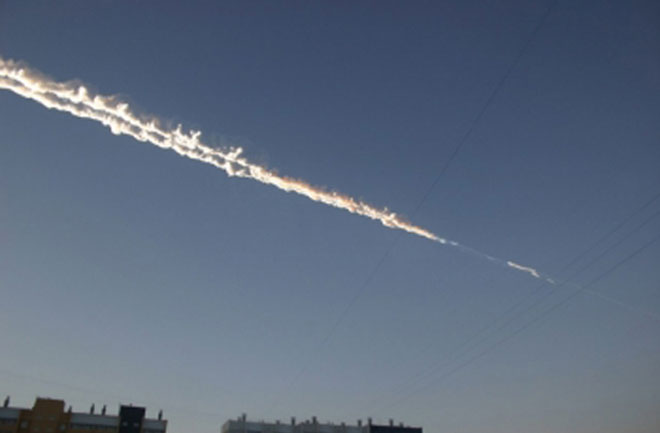Russian meteor hits Earth while Asteroid DA14 sails on by

A meteor exploded in Earth’s atmosphere on February 15 above the remote city of Chelyabinsk, Russia. Videos showing a fireball shooting across the sky followed by an explosion are making their way across news networks and social media sites.
Windows were shattered, and thousands of buildings were damaged in the blast. It is estimated that 1,200 or more people were injured. Most injuries occurred as a result of shattered glass and, surprisingly, only hundreds needed to be hospitalized.
Broken glass litters the streets. Scientists and lay persons alike are on the hunt for pieces of the meteor. Some want to cash in on a piece of history. Others are simply curious and want to find out what it’s made of. Divers have been sent to a frozen lake where it is believed a large chunk of the meteor landed. But for now, nothing has been found.
Estimates suggest the meteor was about 50 feet wide. The estimated force of the blast that occurred when the meteor broke apart when it entered our atmosphere was, according to NASA scientists, approximately 470 kilotons. Luckily, the explosion occurred high enough in the atmosphere to minimize damage here on Earth.
Although there was some speculation that the Russian meteor may be related to the asteroid 2012 DA14, NASA says there’s no connection. The Russian meteor traveled north to south with its trajectory reaching past the orbit of Mars. Asteroid DA14 traveled in the opposite direction and mostly in the orbit of the Earth. This was of interest because DA14 passed by close to the Earth on February 15, the day the Russian meteor hit. DA14 uneventfully passed us by. After all, “close” is a relative term when it comes to space. DA14 passed by Indonesia at 17,500 miles above the surface of the Earth.
What did you think when you saw the videos of the Russian meteor? Would you like to own a piece of it?
Image courtesy of Discovery.com.
3 comments